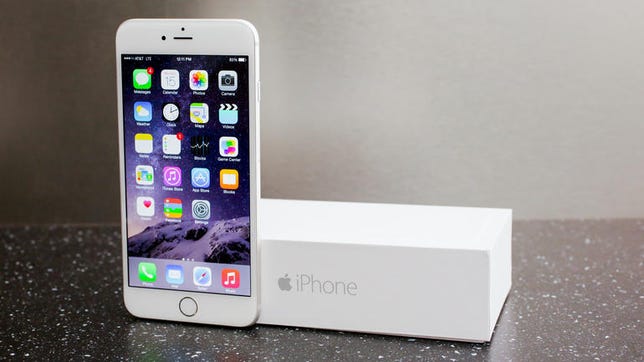
CNET
Apple’s big-screened iPhone 6 and 6 Plus may have drummed up overall iPhone shipments as high as 69 million last quarter, based on new analysis from Morgan Stanley.
In an investor note released Tuesday, Morgan Stanley analyst Katy Huberty offered her firm’s latest prediction for iPhone shipments, upping its previous forecasts of 62 million and later 67 million. Regardless of the final shipment and sales figures, the quarter will almost certainly beat Apple’s previous record of 51 million iPhones sold in the final quarter of 2013. That’s because demand for the new iPhones far outweighed supply through the end of 2014.
The final quarter of 2014 is critical because it marked the first full quarter of sales for the iPhone 6 and iPhone 6 Plus — and because it coincided with the holiday-shopping season, which is generally the strongest quarter each year for retailers. In addition, when Apple released the new iPhones in September, the company finally gave in to consumer pressure for bigger screens, allowing Apple to compete more directly with Samsung’s Galaxy lineup. The December quarter results will indicate whether Apple’s decision to boost screen sizes to sizes to 4.7 inches and 5.5 inches has paid off.
iPhone 6 supply only recently caught up with demand, at least based on the availability of the phones through Apple’s online store. It wasn’t until the second week of January that Apple’s website showed all models of the new iPhones in stock in all colors and capacities and across all four major US carriers.
Looking at the current quarter that ends in March, Huberty said she believes that iPhone shipments could surpass Morgan Stanley’s current estimate of 50 million because Apple suppliers are apparently building more than 52 million units and Apple may be requesting even more in order to increase inventory.
On a related topic, Huberty expects 3 million shipments of the Apple Watch during the current quarter — a number that would ring up an additional $1.4 billion in revenue.
“We believe Watch expectations remain too pessimistic,” Huberty said. “Our surveys and industry conversations indicate strong interest in wearables, especially Apple’s Watch.”
A spokesperson for Apple declined to comment on the report.



